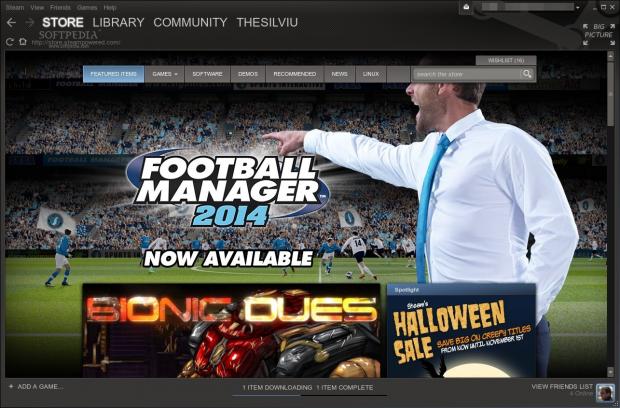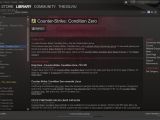Steam, the digital distribution platform from Valve, is probably one of the easiest to recognize products in the entertainment industry. It’s now time to take a closer look at the Linux version, which has been around for almost a year.
Valve launched its digital distribution service more than 10 years ago, and since then, it has played a very long game. Most companies try to achieve as much as possible as quickly as possible, but not Valve.
When the Steam platform was announced, the technologies needed to make it efficient didn't exist. The Internet speed was very low and it made downloading large games almost impossible.
It took years before Steam became the most powerful competition to the retail establishment, and they are still wrestling with it.
Valve is now doing the same with the Linux platform. They launched their client knowing that Linux was far from ready to become an entertaining platform. But, as we said before, they're in it for the long run.
Installation
The company only provides a .deb package for download. Since its launch a year ago, Ubuntu has been the recommended choice and, because Ubuntu is based on Debian, it would make sense to only give deb files.
This hasn't stopped other developers from packaging the software in other formats, and presently it can be installed on virtually any type of distribution.
In any case, you won't be downloading the software per se. You will actually get a Steam installer, which will then trigger the download and installation of the software.
So, download the steam.deb file, open a terminal, and navigate to the folder where it's located (you will need root access and the second command is needed only if the installation fails because of a missing dependency):
sudo dpkg- I steam.deb sudo apt-get install -f
You will have to enter the root password in order to install all the dependencies and you're golden. You now have Steam for Linux.
We installed the application in Ubuntu 13.10. You can also use the Ubuntu Software Manager, but you will need an Ubuntu account.
Usage
For the most part, Steam for Linux works just like its counterparts on the Windows and Mac OS platforms. You see a game, you buy it, install it, and play it. There are no complicated procedures to follow and the game will run out of the box.
Some games do have some special needs and they will require the root password to install a few needed dependencies, but the process is simple and painless. You will only have to enter a password at one point during the installation.
Now, since we last looked at this application, a lot of other things have happened and it's a lot more complex. Every user has its own entry in Steam, based on the username. The menu holds a lot of interesting features.
The first one is Activity. This is where you see all the activity related to your settings. If you joined any groups, their announcements will be posted right here, along with any achievements and other messages from the friends in your list.
There are a few other entries, but one in particular is very important, namely Badges. This is a fairly new feature. A lot of games in the Steam library have something called Trading Cards.
Just like the ones we were collecting when we were kids, the Trading Cards hold a value, in real money, that is set by the ratio between buyers and sellers. These cards can be traded, sold, or combined.
Games usually have 8-10 cards, but only half of them can be unlocked (they simply appear in your inbox after you spend some time playing that particular game), and the other half can only be bought. If you have all the cards in a set, you can combine them and get a discount voucher for a game in the Steam library.
Another interesting feature is called Family Sharing. It's still in beta, but it allows users to share their collection of games with other people, by authorizing a computer to access your library. It can only be done on that particular computer and it doesn't work remotely.
Last but not least, Valve also introduced a program called Steam Greenlight. Users can vote on games that don't usually have a publisher and, if there is enough interest generated for a game, it gets launched. This makes the Steam community a very powerful tool for indie developers.
 14 DAY TRIAL //
14 DAY TRIAL // 








